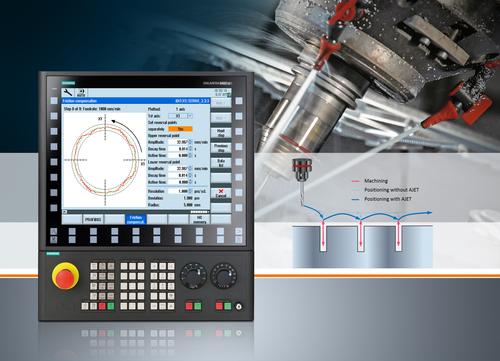Advanced Software Emerges for Optimizing Machine Tool Mechatronics
The marriage of mechatronics know-how and advanced software tools is refining dynamic machine performance using measurements and innovative motion algorithms.
February 10, 2016
Improving the performance of highly complex manufacturing systems such as modern machine tools requires a complete analysis of the mechatronic system. To help with this process, a primary goal is the refinement of software tools that improve system setup, measurement, and the motion algorithms in the controllers. But looking ahead, there are ongoing investigations into areas such as condition monitoring and high-fidelity simulations that could bring machine tool performance to new levels.
“There is an ongoing development of advanced software tools for optimizing the mechatronic performance of controls in machine tools,” Stephen Yutkowitz, mechatronics specialist at Siemens Industry Inc., told Design News during a recent interview. “These are being used to measure, analyze, and adjust key system parameters.”
Yutkowitz said there is a transfer of mechatronics know-how into software for use by non-experts. “One primary goal is automatic setup tools that configure leading-edge software algorithms in the controllers,” he said.

New software-supported features are increasing machine tool precision while also improving machine productivity.
(Source: Siemens)
One focus of this work is software that automates the tuning of control loops and feedforward models. The background needed to advance this software is in mechatronics, which is being used to understand machine tool dynamics and then modifying controller parameters to marry the controller to the specific machining process requirements. Accomplishing this will produce software that extends what the controller can do to customize itself to the machine tool.
“Our goal is to build new ideas on how to better control mechanics that have unique challenges. By understanding system dynamics, we engage in a continuous process that either uses existing capabilities within our software in a creative way or develop new software solutions,” Yutkowitz said.
Areas of Software Development
Siemens is focusing on several areas of application for mechatronic software tools. The first area is developing dynamic accuracy and cutting toolpath-following technology which enables machine tools to work at as high a velocity as possible while still maintaining contour accuracy, creating the right geometry and a good surface finish but completing the machining process in as little time as possible.
As a CNC control vendor, Siemens is working with a broad range of customers whose machine tools exhibit a broad spectrum of mechanical behaviors. The challenge is to make its controllers work most effectively for the unique mechanics in each individual case. A group of personnel in Germany develops models for the mechanics -- either finite element models or networks of lumped or concentrated inertias connected together by springs, dampers, and other nonlinear elements.
“We verify the models with measurements and communicate with the machine tool manufacturer on which factors are limiting the performance. The question is what design change might the machine tool builder consider to reduce the effect of a dominant vibration mode, for example,” Yutkowitz said.
A related area of focus is achieving good dynamic stiffness properties that might enable a machine tool to fight off external forces generated by the machining process, for example. As Siemens engineers work to refine the mechatronics system software, they come to understand the specific mechanics of a specific type of machine tool.
The controllers are applied to various types of machines making different kinds of parts. On one end of the spectrum, there might be a milling machine for high-speed finishing of an injection mold. In that application, the main technical challenge is dynamic path accuracy and being able to run the feedrate as high as possible while still maintaining accuracy. Performance is not just about geometry but also about the surface-finish quality.
The way the parts are manufactured is by going back and forth, left to right and right to left, and moving over a step in between. As the geometry is retraced, any difference between the path traversed in one direction and the other direction has a greater impact on surface quality than does the actual geometric tolerance. Surface quality is highly important in moldmaking, and to achieve that goal requires high dynamic path accuracy.
You May Also Like



